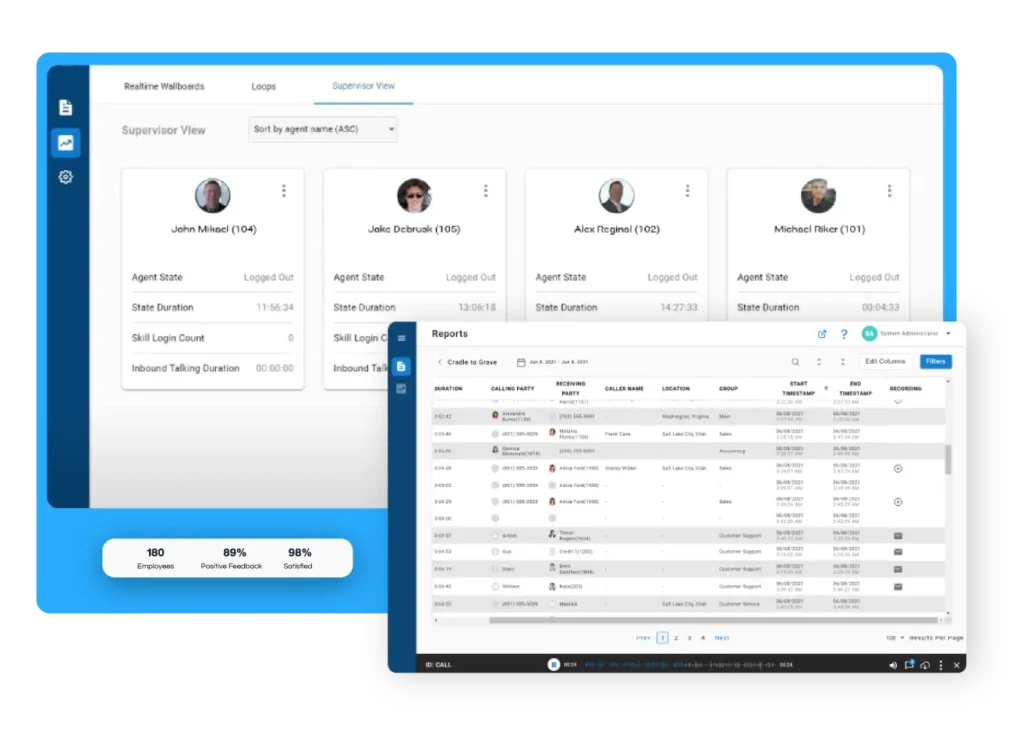Call center quality assurance (QA) is a structured process that helps ensure every customer interaction is handled with accuracy, professionalism, and care. By monitoring and evaluating agent performance, QA helps teams deliver consistent, high-quality service that meets both business goals and customer expectations. However, maintaining strong QA standards can be challenging without the right strategies in place.
Join us as we explore the top 10 call center QA best practices—proven methods that help optimize processes, support agents, and improve overall customer satisfaction.
What is Call Center Quality Assurance?
- Call center quality assurance (QA) refers to the process of monitoring and evaluating customer interactions to ensure service standards are met.
- The primary objectives of call center quality assurance are to improve agent performance, enhance customer satisfaction, identify training needs, and provide actionable feedback for continuous improvement.
- Quality assurance has become increasingly important for call center businesses as customer expectations rise and competition demands consistently high service standards.
Why Optimizing QA for Call Centers is Essential
Optimizing quality assurance (QA) for call centers has become increasingly important for today’s operations, delivering a range of powerful business benefits—from improved customer loyalty to stronger brand reputation.
When QA processes are well-implemented, agents receive consistent feedback that helps them resolve issues more effectively—which in turn boosts first-call resolution rates (FCRs) and customer satisfaction. This efficiency reduces operational costs and minimizes agent churn by fostering a more supportive and structured work environment. Businesses that deliver consistent, high-quality service are also more likely to earn customer trust and loyalty, which can create a competitive edge in the marketplace.
10 Best Practices to Enhance Call Center Quality Assurance
-
Define Clear Quality Standards and Metrics
- First Call Resolution – Measures the percentage of calls resolved without a follow-up.
- Average Handle Time (AHT) – Tracks the average duration of a call from start to finish.
- Customer Satisfaction Score (CSAT) – Based on post-call surveys asking customers to rate their experience.
- Quality Assurance Score – A score based on how well the call aligns with internal quality standards.
- Call Compliance Rate – Assesses whether agents follow required procedures, scripts, and legal guidelines.
-
Implement Consistent Call Monitoring
-
Deliver Timely, Constructive Feedback
-
Leverage Speech and Text Analytics
-
Conducting Quality Assurance Audits
-
Incorporate Gamification and Reward Programs
-
Provide Comprehensive Agent Training
-
Root Cause Analysis for Improvement
-
Track and Act on Customer Sentiment
-
Integrate QA with Training & Development
Crafting a Superior Quality Assurance Strategy
Implementing a proven set of best practices for call center quality assurance is essential for delivering exceptional customer service and maintaining operational excellence. By integrating QA insights into overall business strategies, companies can identify areas for improvement and make informed decisions that drive success.
Need some help with your call center QA implementation? Xima offers a wide variety of QA features that can help improve your operation’s performance across the board.
FAQs about Call Center Quality Assurance
QA in a call center environment typically involves monitoring call accuracy, compliance, customer satisfaction, agent performance, and adherence to company policies.
Quality assurance ensures that customer interactions meet set standards for professionalism, accuracy, and effectiveness to improve service quality.
Central elements of an effective call center QA program include clear evaluation criteria, regular call monitoring, agent training, feedback mechanisms, and data-driven performance analysis.
Potential difficulties in implementing call center quality assurance include inconsistent evaluation standards, resistance from agents, data overload, and difficulty in measuring subjective factors like empathy.



